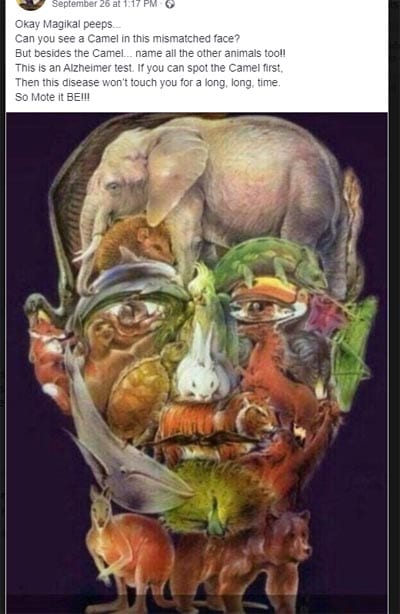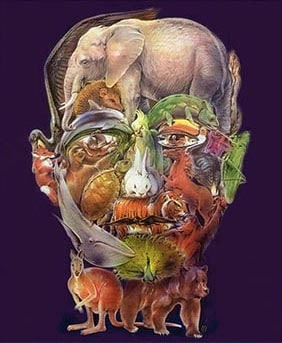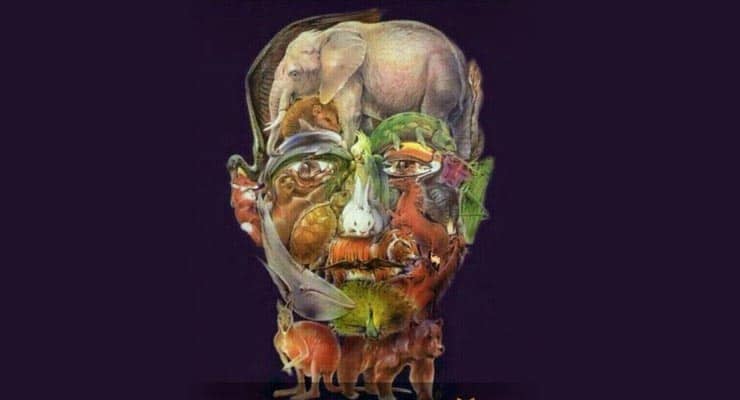Can spotting a camel in a photo determine likelihood of Alzheimer’s? Fact Check
A message on social media claims that being able to spot the image of a camel in a collage of other animals can determine your likelihood of developing Alzheimer’s disease.
 FALSE
FALSE
Most captions claim that those who can easily spot the camel in the collage are not likely to develop Alzheimer’s Disease. The natural implication of this is that those who cannot easily spot the camel have a higher risk of developing Alzheimer’s.

The test of the head is to find a camel, it’s a test to see who can develop Alzheimer’s. Doctors say those who find the camel will be far from developing Alzheimer’s.
This post was sent to me and said if you can find the Camel in the picture you are less likely to develop Alzheimer’s-some medical website. Not sure I believe it but I couldn’t find the camel
The claim isn’t true; finding a camel in an image has no apparent bearing on one’s risks of developing Alzheimer’s disease, nor any other form of dementia.
In fact, the camel in the collage of animals is not in the original artwork, which has been online since 2009. At the time of writing, the artist behind the collage of animals is unknown, but original iterations of the artwork on the Internet show the same work minus the camel.
Sponsored Content. Continued below...
It appears the camel was added sometime after along with the false assertion that being able to spot it has some bearing on your risks of developing Alzheimer’s. The original artwork can be seen below.

We reached out to Alzheimer’s Research UK through email who confirmed the image was not related to the diagnosis of dementia.
No such image has ever been tested in research studies to see if it is an accurate, valid or reliable test that can determine whether someone has dementia or not.
When someone is experiencing memory problems they are assessed by trained specialists (for example dementia nurses, neurologists, psychiatrists), they take part in multiple assessments that test memory, information processing and brain function. These tests alone are often not enough to diagnose someone, and a medical history, brain scan and sometimes a lumbar puncture are also used alongside tests scores to give someone a diagnosis of dementia.
Alzheimer’s Research UK also told us that while a number of tests can be performed to test the likelihood of having dementia, none are “as simple or arbitrary as spotting something like a camel on a static image.”
Additionally, the UK’s Alzheimer’s Society also told us that this picture has not been used in any tests to diagnose the disease.
This picture has not been used for any diagnostic or predictive purposes and therefore its ability to predict risk of Alzheimer’s Disease is unknown.
As such, we rank this claim false.
Continued below...
Thanks for reading, we hope this article helped, but before you leave us for greener pastures, please help us out.
We're hoping to be totally ad-free by 2025 - after all, no one likes online adverts, and all they do is get in the way and slow everything down. But of course we still have fees and costs to pay, so please, please consider becoming a Facebook supporter! It costs only 0.99p (~$1.30) a month (you can stop at any time) and ensures we can still keep posting Cybersecurity themed content to help keep our communities safe and scam-free. You can subscribe here
Remember, we're active on social media - so follow us on Facebook, Bluesky, Instagram and X
